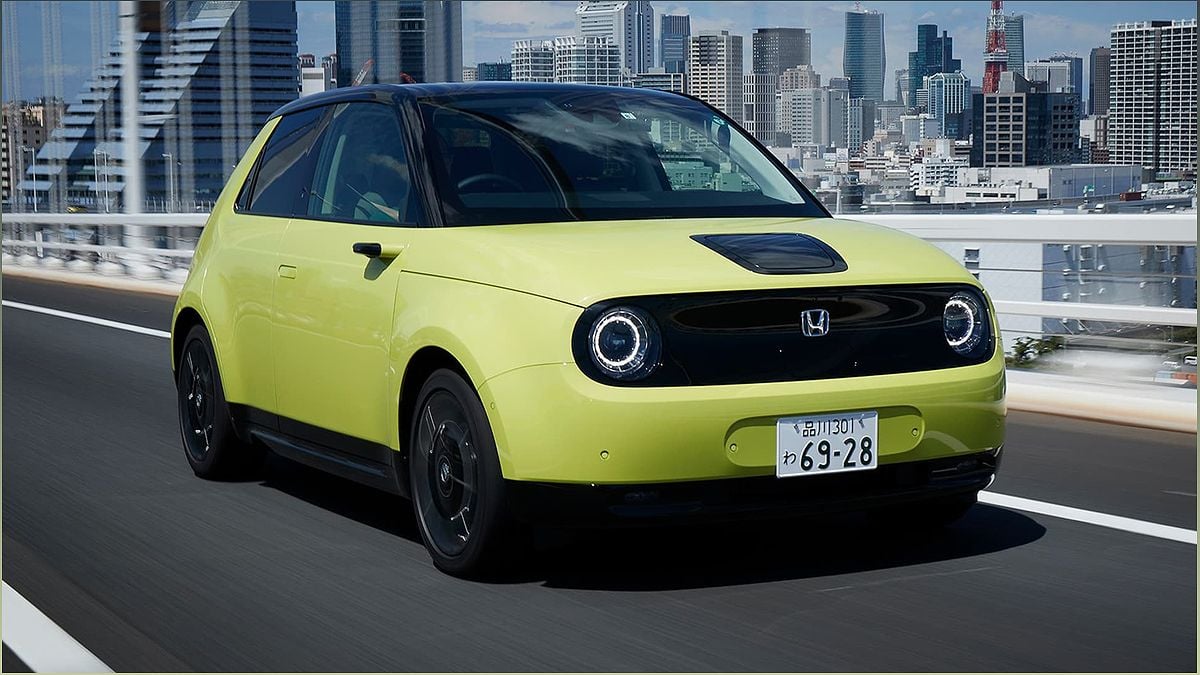The Honda E Electric Car: Discontinued Due to Slow Sales
The retro-styled Honda E electric hatchback has been axed from the showroom line-up in Europe and Japan after facing sluggish sales. Despite its distinctive design, advanced technology, and driving dynamics, the Honda E failed to meet its annual target of 10,000 deliveries, selling only about 5,500 units in Europe in the past two years. Priced at nearly €35,000 and offering a driving range of 200km to 220km, the Honda E struggled to compete with larger electric vehicles like the Tesla Model 3. As a result, Honda has decided not to produce a successor to the Honda E, focusing instead on the growing demand for SUVs in the market.
The Honda E: A Retro-styled Electric Hatchback
The Honda E was introduced in 2020 as a stylish and compact electric hatchback. With its retro-inspired design and advanced technology, it aimed to capture the growing market for electric city cars in Europe and Japan.

The distinctive design of the Honda E set it apart from other electric vehicles. Its compact size and retro styling made it a standout choice for urban drivers looking for a stylish and environmentally-friendly option.
Equipped with advanced features such as a digital dashboard, touchscreen infotainment system, and connected services, the Honda E offered a modern and futuristic driving experience.
Despite its appeal, the Honda E faced challenges in the market due to its high price and limited driving range. Let’s explore these factors in more detail.
Challenges of High Price and Limited Range
One of the main challenges faced by the Honda E was its high price. Priced at nearly €35,000, it positioned itself in the premium electric car segment, competing with larger and more established brands.
Additionally, the Honda E offered a driving range of 200km to 220km, which was considered relatively limited compared to other electric vehicles on the market. This range anxiety deterred potential buyers who required a longer driving range for their daily commutes or longer trips.
The combination of a high price and limited driving range made the Honda E a less attractive option for consumers, leading to slower sales than anticipated.
Sales Performance and Discontinuation
Despite its unique design and advanced technology, the Honda E struggled to meet its sales targets. In the first two full years on the market, it reportedly sold about 5,500 units in Europe, only half of its annual target of 10,000 deliveries.
As a result of the slower sales and the growing popularity of SUVs in the market, Honda made the decision to discontinue the Honda E. Orders for the vehicle have closed in Europe and the UK, and production is set to end in January 2024.
While the Honda E brought new customers to the brand with its distinctive design and driving dynamics, the market demand for SUVs influenced Honda’s decision to focus on SUV-driven product line-up in the future.
The Future of Honda’s Electric Cars
Although the Honda E will be discontinued, Honda remains committed to electric vehicles. The company has introduced the e:Ny1 electric SUV in Europe, based on the Honda HR-V, catering to the growing demand for SUVs in the market.
With the exception of the Civic Type R hot hatch, Honda Europe has focused on hybrid, plug-in hybrid, and electric cars since 2022. However, there are no plans for a second-generation Honda E or another similarly-sized electric vehicle.
Honda’s decision to prioritize SUVs reflects the market demand and the shift in consumer preferences towards larger, versatile vehicles. As long as the market demands SUVs, Honda will continue to focus on meeting those needs.
